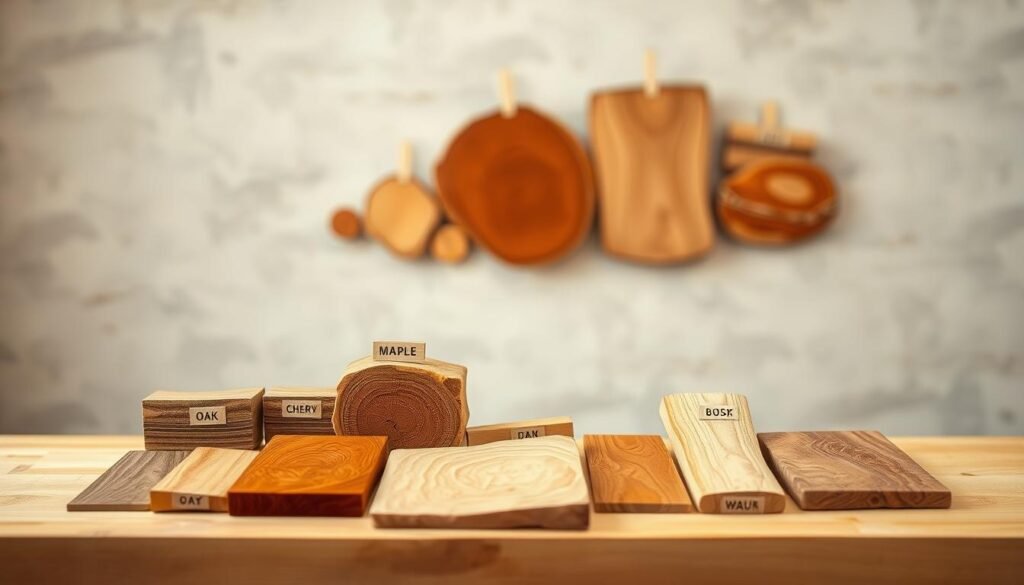Woodworking is all about precision, patience, and safety. It doesn’t matter if you’re experienced or just starting out. Making accurate cuts is key to your project’s success.
This article will share top wood cutting techniques and safety tips. Follow these to boost your accuracy and work safely.
We’ll talk about everything from tool prep to making precise cuts. Let’s dive into improving your woodworking skills.
The Foundation of Professional Wood Cutting
To get good at woodworking, you need a strong base in wood cutting. This base comes from knowing how to cut wood, picking the right tools, and setting up a good workspace.
Wood cutting is a skill that takes time, patience, and focus. It’s key to pick the right cutting techniques for each job. Different cuts like rip, cross, and miter cuts need specific tools and methods.
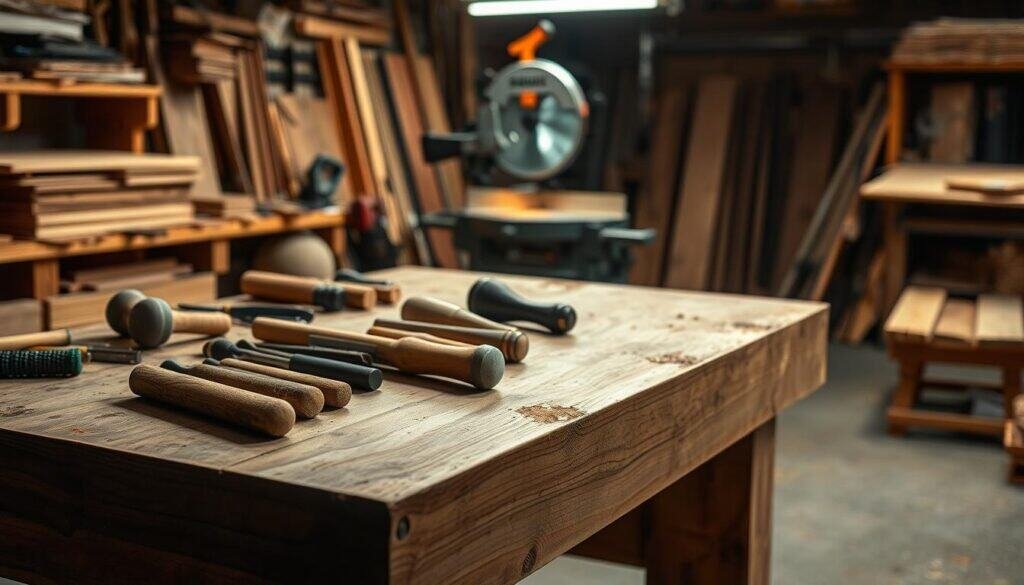
Knowing the basics of woodworking is also important. This means learning how to measure and mark wood right. It also means keeping tools sharp and in good condition. Mastering these basics helps woodworkers do better work.
A clean and safe workspace is also critical for wood cutting. It should be tidy, well-lit, and have all the safety gear. With these things, woodworkers can build a solid foundation for their work.
By focusing on the basics of wood cutting, woodworkers can get better at their craft. Whether you’re new or have been doing it for years, improving your cutting skills and understanding woodworking basics will lead to better projects.
Essential Safety Gear Every Woodworker Needs
Woodworking safety is more than just avoiding injuries. It’s about making your workshop a safe place. Woodworkers face dangers like flying debris, loud noises, and harmful dust. So, wearing the right safety gear is key to staying safe.
Safety glasses are a must-have. They protect your eyes from sawdust, wood chips, and other dangers. Make sure your safety glasses fit well and are made to withstand impacts.
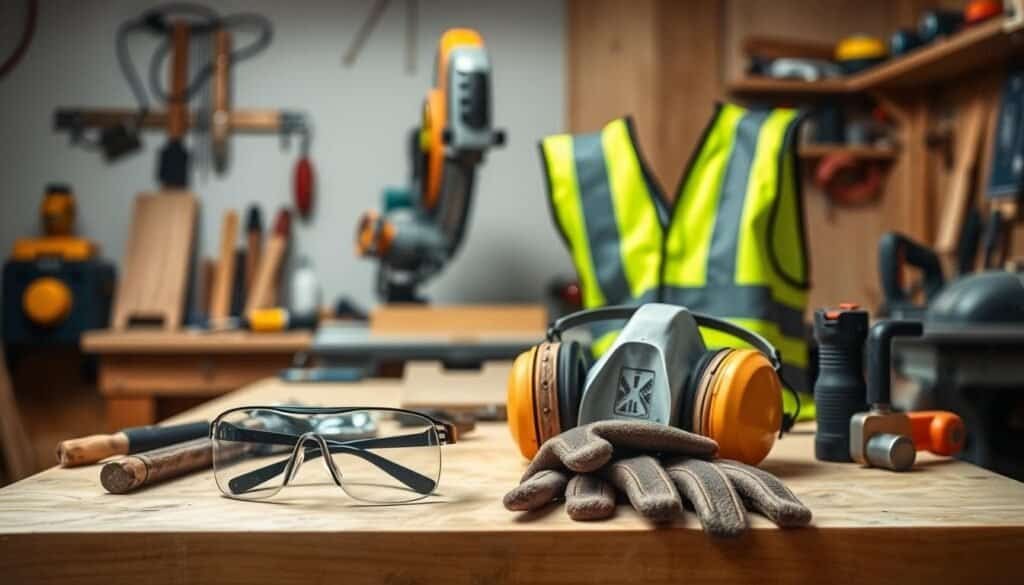
Don’t forget about hearing protection. Loud noises from power tools can harm your hearing. Use earplugs and earmuffs together for the best protection.
Dust masks are also important. They keep harmful dust and particles out of your lungs. Choose dust masks that filter fine particles and fit snugly around your face.
Other safety items like gloves, a first aid kit, and good ventilation are also important. By using the right safety gear and following safe practices, you can make your workshop safer and healthier.
Choosing the Right Tools for Your Cutting Tasks
Knowing the different cutting tools is essential for good woodworking. Each tool is made for specific tasks. Choosing the right one can greatly improve your work’s quality and safety.
For cutting wood, saws are the main tools you’ll use. Circular saws and track saws are great for straight cuts in many materials.
Circular Saws and Track Saws
Circular saws are versatile and widely used. They’re perfect for ripping lumber and making crosscuts. Track saws, being portable, offer the precision of a table saw. They use a track for accurate cuts.
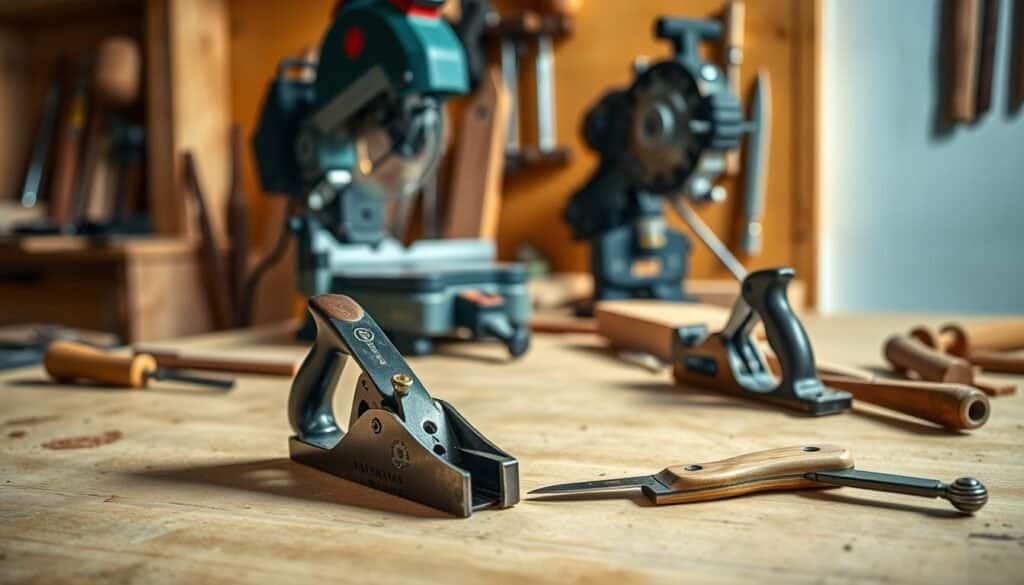
Jigsaws and Band Saws
Jigsaws are great for curved cuts and irregular shapes. They offer flexibility and control. Band saws, with their continuous blade, are excellent for resawing and precise curved cuts. Both are key for detailed work and can handle wood and metal.
Miter Saws and Radial Arm Saws
Miter saws are specialized for precise crosscuts and angled cuts. They’re essential for framing and trim work. Radial arm saws, though less common, are also for crosscuts and complex angled cuts.
Choosing the right tool depends on the task. Knowing the strengths and uses of each tool improves your woodworking projects’ accuracy and safety.
Mastering Measurement Techniques for Perfect Cuts
The secret to perfect cuts is knowing how to measure accurately. Getting your measurements right is key to a successful woodworking project.
Tape Measures and Rules
Tape measures and rules are essential for woodworkers. It’s important to read the measurements correctly and consider any mistakes you might make.
For example, make sure your tape measure is straight. Twisted or bent measures can be off by a lot.
Squares and Angles
Squares and angle tools help make sure your cuts are right. They check if your cuts are the correct length and angle.
A combination square is great for checking squareness and marking precise angles. It’s a must-have for accurate cuts.
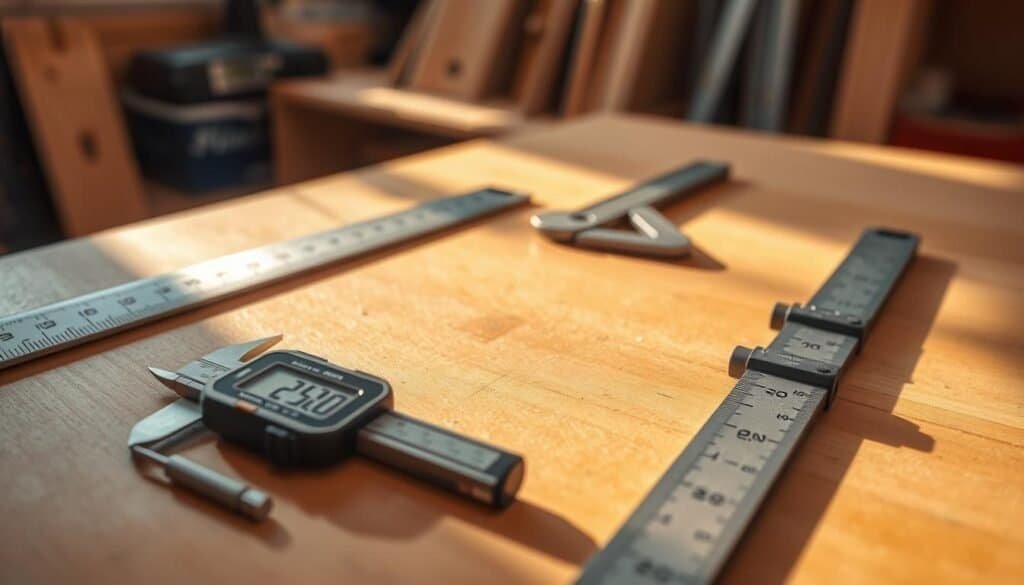
Digital measuring tools are very accurate and make measuring easier. Tools like calipers and digital angle gauges help a lot.
When using digital tools, make sure they’re set up right. This prevents mistakes.
Learning these measurement techniques and using the right tools can make your cuts much better. This leads to joints that fit perfectly and a professional look.
Practicing and getting better at measuring is important. It’s a key step for anyone wanting to get better at woodworking.
Setting Up and Using a Table Saw Safely
The table saw is a key tool in woodworking. It’s important to use it safely. Whether you’re experienced or new, knowing how to set up and use a table saw is vital. It helps you make accurate cuts and stay safe.
Before you start cutting, make sure your table saw is set up right. Check the blade alignment and that the fence is straight. Also, make sure all safety features are working. Keeping your saw in good shape is essential for safety.
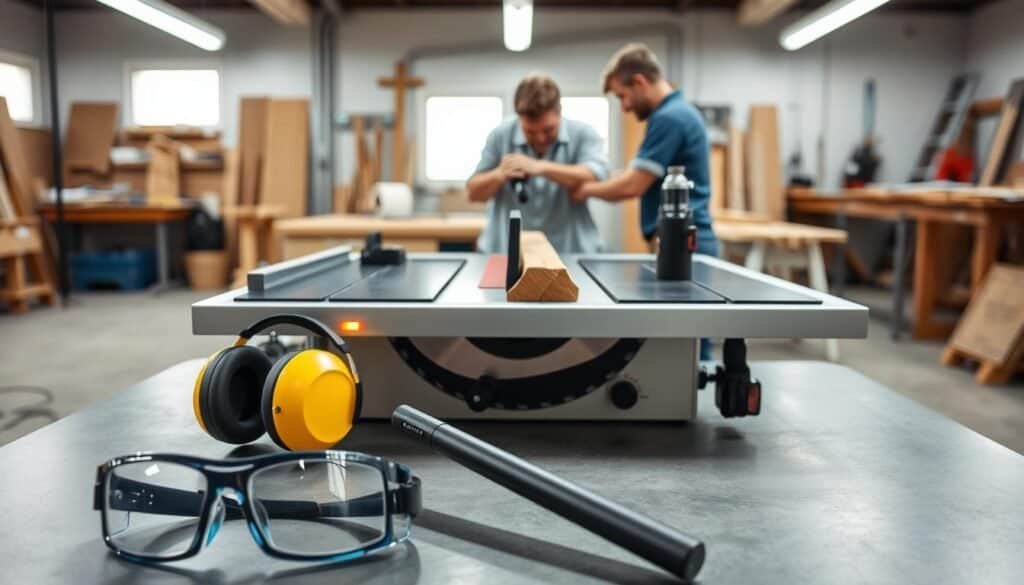
Rip cuts are when you cut wood along its grain. To do a safe rip cut, use a rip fence to guide the wood. Keep your hands away from the blade. Always use a push stick or safety device when cutting narrow pieces.
Crosscuts
Crosscuts are cuts across the wood grain. For safe crosscutting, use a miter gauge or crosscut sled. These tools help prevent kickback and keep your hands safe.
Miter Cuts
Miter cuts are precise angled crosscuts. To make a miter cut safely, set your miter gauge to the right angle and lock it in place. Use a push stick if needed to keep your hands away from the blade.
Bevel Cuts
Bevel cuts involve tilting the blade to cut at an angle. Be careful with bevel cuts because the blade’s tilt can change the cut’s direction and kickback risk. Always wear safety gear and keep loose clothing tied back.
No matter the cut, always follow basic safety rules. Wear protective gear like safety glasses and hearing protection. Keep your work area clean and avoid reaching over the blade. With the right setup, safe practices, and techniques, you can use your table saw confidently and accurately.
Cutting Wood Like a Pro: Tips for Accuracy and Safety
To cut wood like a pro, you need to get good at accuracy and safety. Professional woodworkers know these are key for top-notch results.
Start by using the right measuring tools. This means using tapes, squares, and calipers for precise cuts. Also, mark your lines clearly with a sharp pencil or knife to avoid mistakes.
Always put safety first when using power tools. Wear safety glasses, ear protection, and a dust mask. Keep your workspace tidy to avoid accidents.
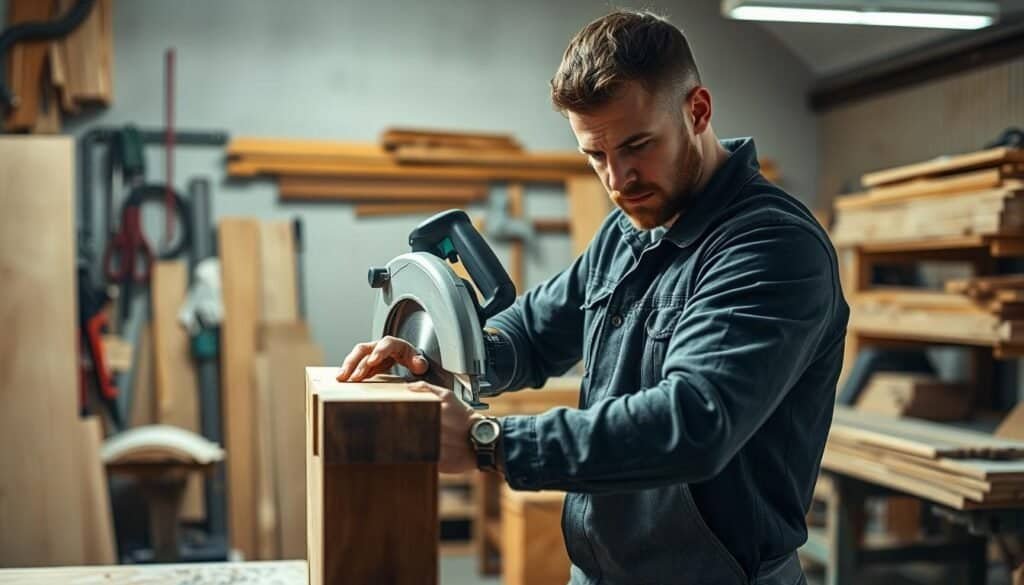
Knowing your tools is also important. Learn what each saw can do and what it can’t. Regularly check and clean your blades to keep your work safe and accurate.
When cutting, keep your hand steady and feed the wood at a steady pace. Practice different cuts to improve your skills for various projects.
Lastly, be ready for surprises. Having a plan for mistakes or unexpected cuts can save time and reduce waste. With these tips, practice, and patience, you’ll cut wood like a pro.
Precision Techniques with Hand Tools
In woodworking, hand tools are key for making detailed cuts. They offer control and finesse that power tools can’t match. This is why hand tools are so important in workshops.
Sharpening hand tools right is essential. A dull tool is hard to use and can be dangerous. Keeping tools sharp ensures clean cuts through wood.
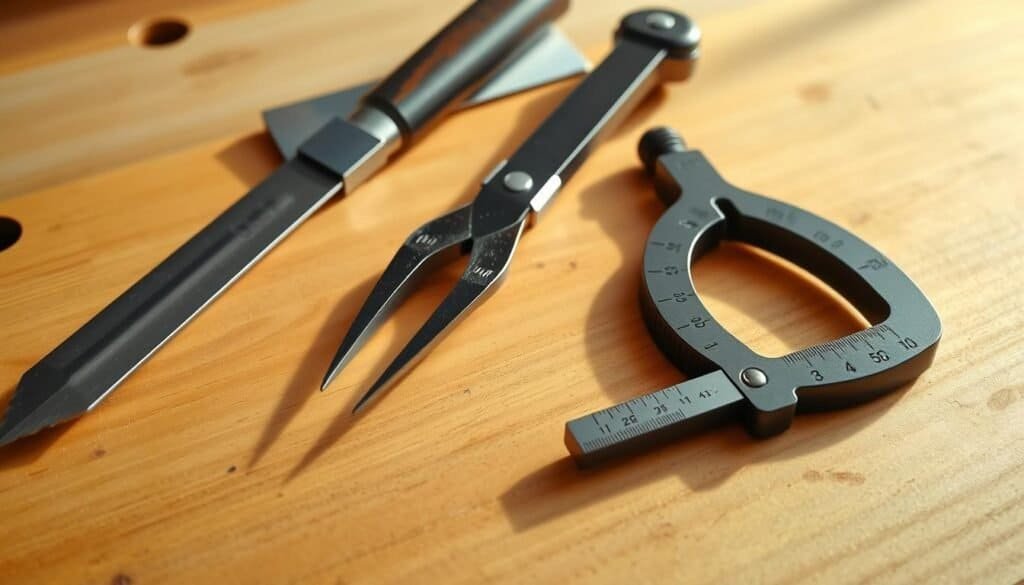
Using hand tools correctly is also vital. It means knowing the right grip, stance, and motion for each tool. For example, using a hand saw right can make your cuts much more accurate.
Getting the right amount of pressure is another skill to learn. Too much pressure can cause uneven cuts, while too little might not cut through. With practice, you’ll find the perfect balance.
Understanding the wood you’re working with is also important. Different woods react differently to hand tools. Knowing this can help you make more precise cuts.
By learning these techniques, woodworkers can get professional results. Hand tools are a must for fine furniture making or detailed wood carving.
Creating and Using Jigs for Repeatable Accuracy
For woodworkers, jigs are a big deal. They are custom tools that guide your tools for precise cuts. Jigs help you get consistent results in your woodworking, whether it’s complex furniture or simple projects.
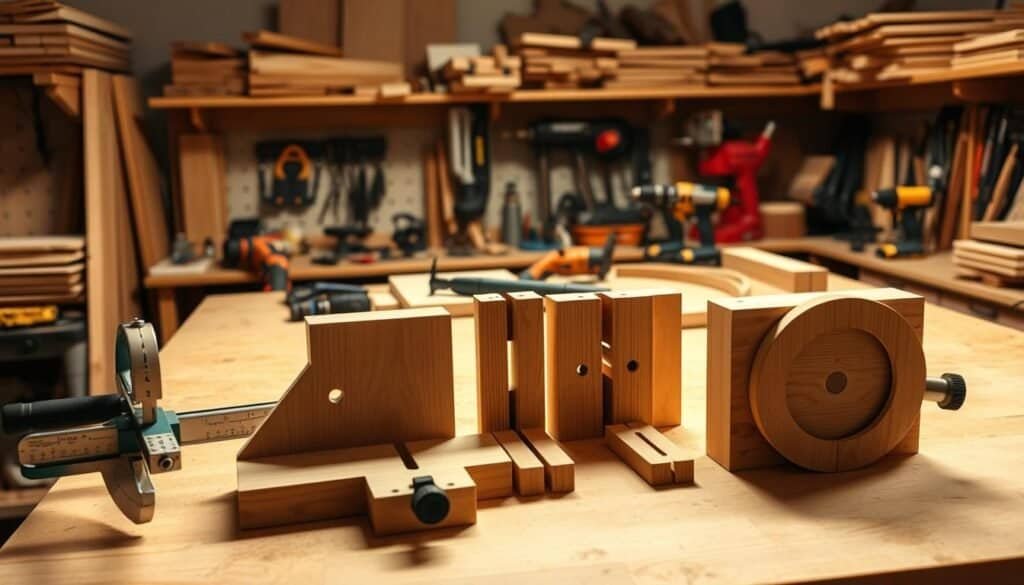
There are many types of jigs for different needs. Knowing and using them can make your woodworking better.
Crosscut Sleds
A crosscut sled is great for table saws. It makes precise cuts across wood. It’s perfect for big panels or when you need to make the same cut over and over.
Miter Jigs
Miter jigs help with accurate angled cuts. They work on table saws and miter saws. They’re key for making picture frames, crown molding, and more.
Tapering Jigs
Tapering jigs make tapered cuts, common in furniture making. They guide your workpiece at an angle for consistent tapers. You can adjust them for different angles, making them very useful.
Using these jigs will make your cuts more accurate and save time. Jigs are essential for improving your woodworking skills.
Advanced Cutting Techniques for Joinery
Learning advanced cutting techniques is key for making strong and smooth joints in woodworking. Joinery needs precision to ensure joints fit perfectly. This makes the woodwork both durable and beautiful.
The mortise and tenon joint is a basic but important joint in woodworking. To make it right, you need the right tools and skills. First, mark the mortise and tenon on the wood with a marking gauge for accuracy. Use a mortise chisel or a drill press with a mortise bit to remove the wood. For the tenon, a tenon saw or a table saw with a dado blade is best for precise cuts.
Dovetail joints are another classic that needs advanced skills. You’ll need a dovetail saw and a chisel for this. Start by marking the dovetail tails on one piece of wood. Then, cut along the marks with a dovetail saw. Use a chisel to remove the waste between the tails. For the pins, mark their spot on the other piece using the tails as a guide. Cut them out with a dovetail saw.
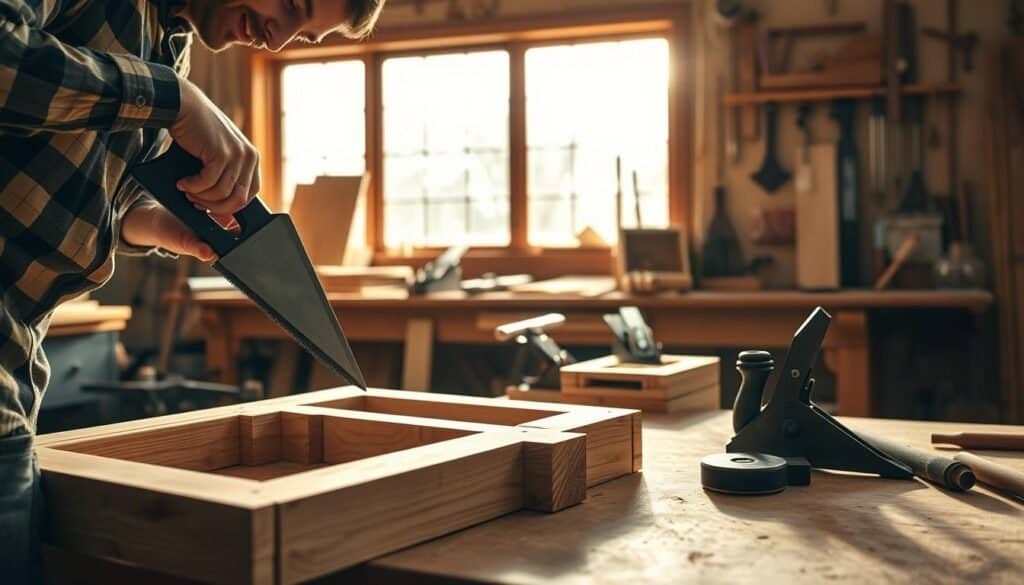
Dado joints are used a lot in shelving and cabinet making. To cut a dado joint, use a dado blade on a table saw or a router with a straight bit. Make sure the dado is the right width and depth for a snug fit. Precision is essential for a strong and stable joint.
In summary, advanced cutting techniques are critical for precise joinery in woodworking. By learning to cut mortise and tenon, dovetail, and dado joints, woodworkers can make joints that are strong, durable, and enhance their projects.
Dealing with Difficult Woods and Special Cuts
Working with difficult woods and special cuts needs skill, patience, and the right methods. Woodworkers face challenges with woods that are hard, soft, or easily torn. This makes cutting them a tough task.
Hardwoods like oak or maple require sharp tools for clean cuts. Dull blades can split the wood or make it misshapen. This adds extra work and waste.
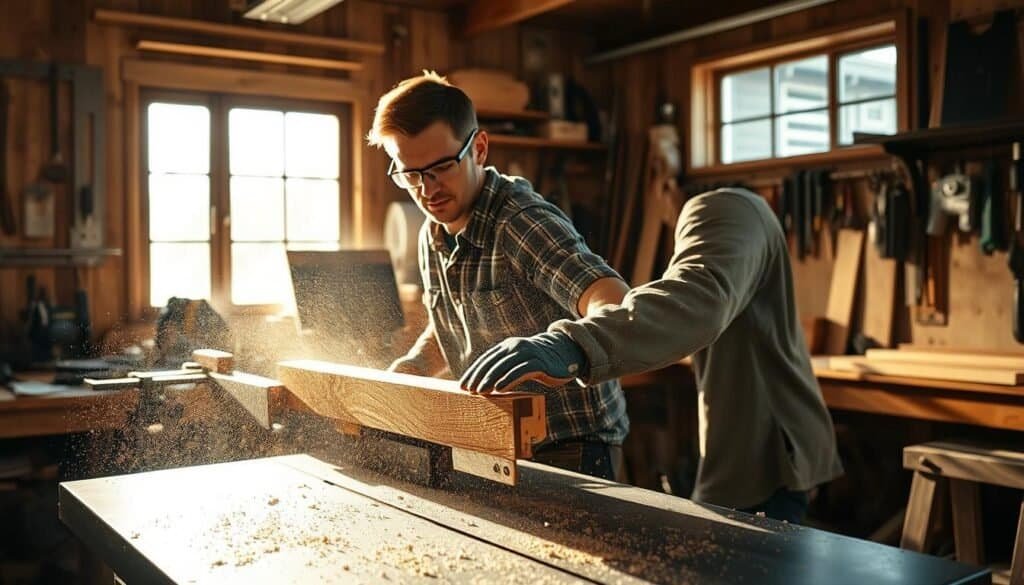
Special cuts, like curved or angled ones, need precision and the right tools. Jigs or templates help get the shape or angle right. For detailed cuts, a bandsaw or coping saw works better than a table saw.
Knowing the wood’s characteristics is key. Woods with a strong grain pattern need different cutting methods than those with a straight grain. Adjusting your cutting style to the wood type helps overcome woodworking hurdles.
Keeping your tools in top shape is also important. A sharp saw blade, for example, cuts better and lasts longer. This makes cutting hardwoods easier.
In summary, mastering difficult woods and special cuts takes time and practice. With the right techniques, tools, and understanding of wood, woodworkers can overcome these challenges. They can then achieve professional-quality results.
Maintaining Your Cutting Tools for Optimal Performance
Keeping your cutting tools in good shape is key for safety and precision. Sharp tools are safer because they need less force to cut. This reduces the chance of accidents. Dull tools, by contrast, can cause more fatigue and increase injury risk.
Regular sharpening is vital to keep your tools sharp. How often you sharpen depends on the tool and how much you use it. For example, chisels and plane blades need sharpening more than circular saw blades. Using the right sharpening tools, like whetstones or diamond stones, helps keep the edge sharp.
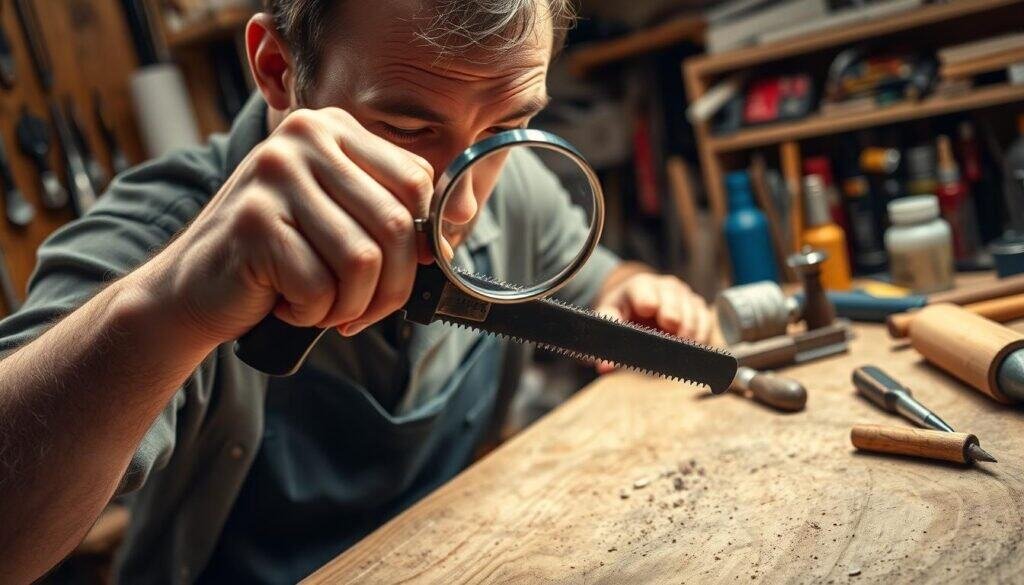
Cleaning your tools after each use is also important. It removes resin, wood debris, and other substances that can damage the tool. Storing tools properly is also key. They should be kept dry, away from sunlight, and in a protective case or on a tool rack.
By following these maintenance steps, you’ll extend your tools’ life and keep them working well. This focus on detail leads to better woodworking and a safer workspace.
Finishing Your Cuts: Sanding and Edge Treatment
Sanding and edge treatment are key steps to make a woodworking project stand out. They require attention to detail and the right techniques for a smooth finish.
Sanding is vital in the finishing process. It removes imperfections and rough spots from cut surfaces. Begin with coarse-grit sandpaper and move to finer grits for a smooth finish. Always sand with the wood grain to prevent scratches.
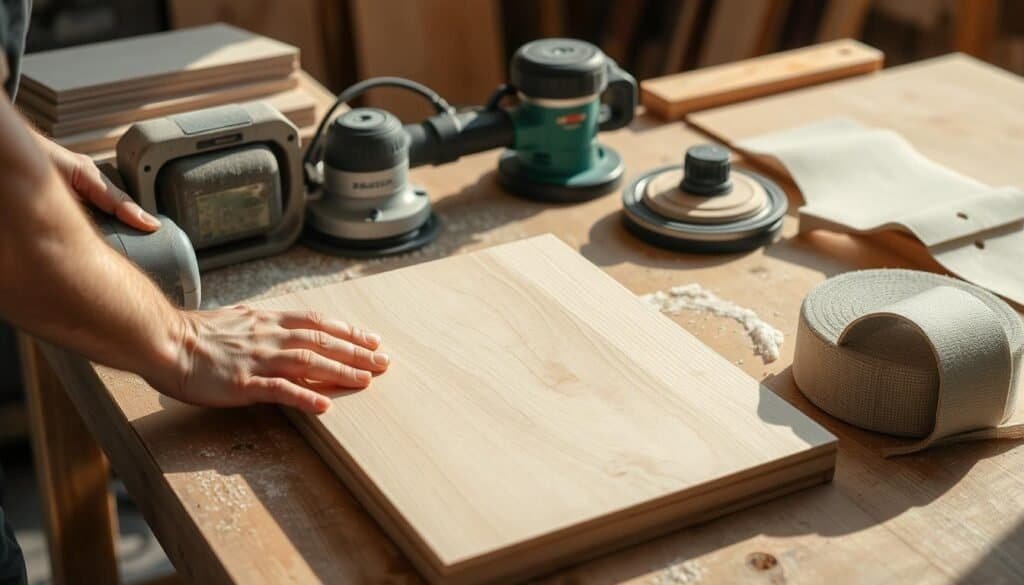
Edge treatment is also critical for the project’s look. Techniques like rounding or chamfering edges can add a professional touch. Use a router or sandpaper to get the desired edge profile.
Mastering sanding and edge treatment can greatly improve your woodworking projects. These techniques not only enhance appearance but also make the product more durable.
Conclusion
Mastering wood cutting is key for any woodworker. We’ve covered the basics, safety, and tools needed for top results.
Accuracy and safety are vital in woodworking. The right tools, precise measurements, and well-kept equipment ensure clean cuts and safety.
Keep practicing to get better. Try new cutting methods and learn from others. Online tutorials and workshops can help a lot.
Getting good at cutting wood takes the right skills, safety, and practice. Follow this guide to improve your woodworking. Remember, getting better is a journey, and there’s always more to learn.



